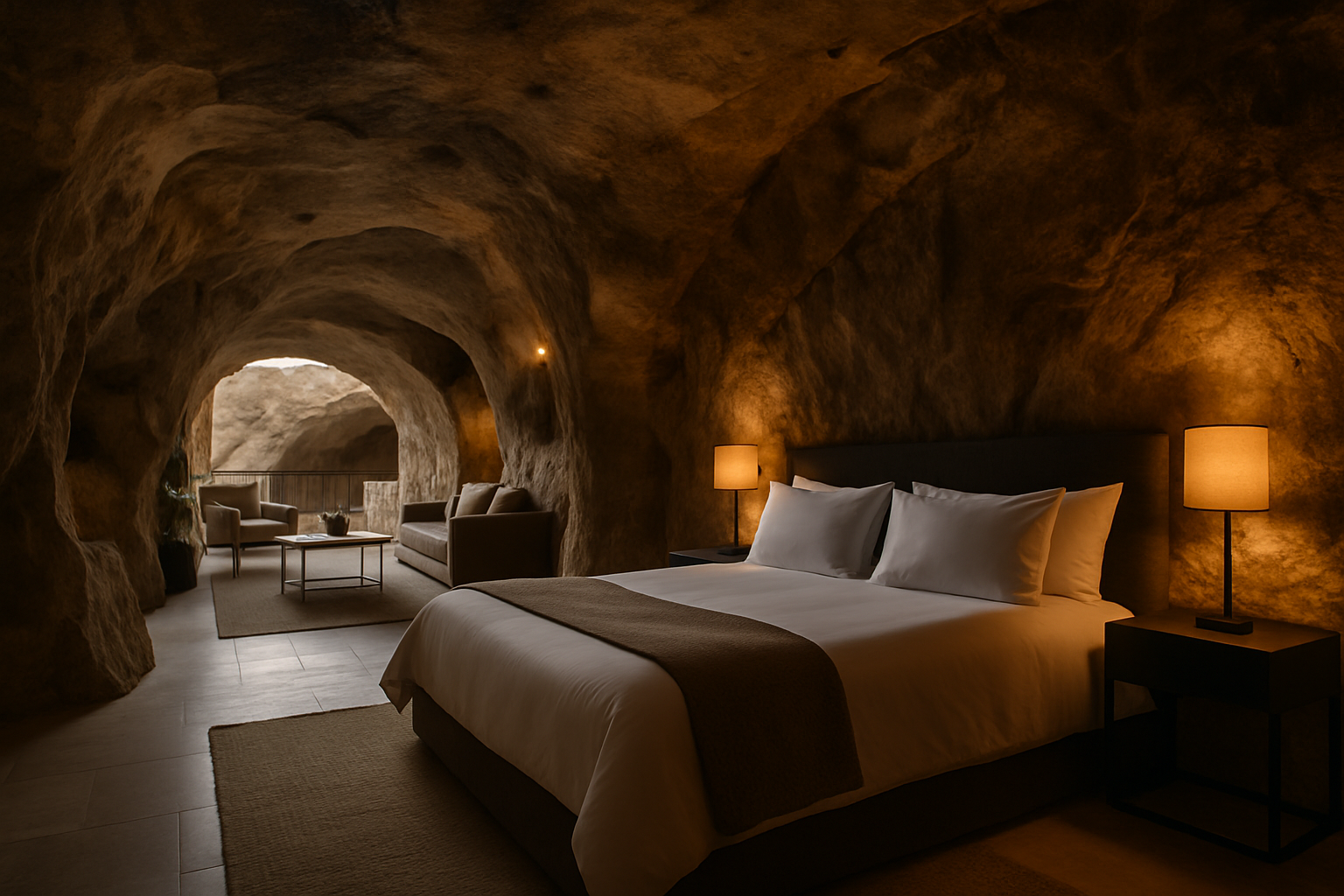Subterranean Getaways: Exploring the Hidden World of Cave Hotels
As travelers seek increasingly unique and immersive experiences, a new trend is emerging from the depths of the Earth: cave hotels. These subterranean sanctuaries offer a blend of primitive charm and modern luxury, allowing guests to sleep in chambers carved by nature over millennia. From ancient dwellings repurposed for tourism to newly excavated havens, cave hotels are redefining the concept of underground luxury.

In regions like Cappadocia, Turkey, and Matera, Italy, entire communities lived in cave dwellings for centuries. These areas became known for their unique architecture and the ingenuity of their inhabitants, who carved intricate living spaces, churches, and storage areas into the soft rock.
The Rise of Modern Cave Hotels
The concept of cave hotels as we know them today began to take shape in the late 20th century. Enterprising hoteliers and developers saw potential in abandoned cave dwellings and began transforming them into unique accommodations. This trend gained momentum in the early 2000s as travelers increasingly sought out authentic and offbeat experiences.
Today, cave hotels can be found in various locations worldwide, from the fairy chimneys of Cappadocia to the limestone cliffs of Andalusia, Spain. Each offers a distinct experience, blending the raw beauty of natural rock formations with modern amenities and design elements.
The Appeal of Underground Luxury
Cave hotels offer a unique appeal that sets them apart from traditional accommodations. The natural insulation provided by rock walls creates a stable temperature year-round, making these hotels energy-efficient and comfortable in both hot and cold climates. The absence of windows in many cave rooms also ensures complete darkness, promoting deep, restful sleep.
Moreover, the sense of history and connection to the earth resonates with many travelers. Staying in a cave hotel allows guests to experience a form of accommodation that has sheltered humans for millennia, creating a profound sense of place and time.
Challenges and Considerations
While cave hotels offer a one-of-a-kind experience, they also present unique challenges. Humidity control is crucial to prevent mold growth and ensure guest comfort. Proper ventilation systems must be installed to maintain air quality within the enclosed spaces.
Accessibility can also be an issue, as many cave hotels are located in remote or difficult-to-reach areas. Some may require guests to navigate steep stairs or narrow passageways, making them unsuitable for those with mobility issues.
Conservation is another important consideration. As the popularity of cave hotels grows, there is a need to balance tourism development with the preservation of geological and archaeological sites. Many cave hotel projects work closely with local authorities and conservation experts to ensure responsible development and operation.
The Future of Subterranean Hospitality
As the travel industry continues to evolve, cave hotels are likely to play an increasingly significant role in the luxury and experiential travel sectors. Innovations in sustainable design and construction techniques are making it possible to create more comfortable and eco-friendly cave accommodations.
Virtual reality technology is also being employed by some cave hotels to offer immersive historical experiences, allowing guests to visualize how these spaces were used in the past. This blend of ancient architecture and cutting-edge technology is creating a new niche in the hospitality industry that appeals to history buffs, adventure seekers, and luxury travelers alike.
Cavern Comforts: Tips for Your Underground Stay
• Book well in advance, as many cave hotels have limited rooms and high demand
• Pack layers, as temperatures in cave rooms can be cooler than expected
• Bring a small flashlight or headlamp for navigating dimly lit areas
• Choose a room with a terrace or balcony if you prefer some outdoor space
• Inquire about guided tours of the surrounding area to learn more about the local geology and history
• Be prepared for unique bathroom setups, as plumbing can be challenging in cave environments
• Consider the location carefully, as some cave hotels may be far from other attractions or dining options
The allure of cave hotels lies in their ability to transport guests to a world both ancient and novel. As travelers continue to seek out extraordinary experiences, these subterranean sanctuaries offer a perfect blend of history, nature, and luxury. Whether nestled in the rock formations of Cappadocia or carved into a seaside cliff, cave hotels provide a truly immersive stay that connects guests with the Earth in a profound and unforgettable way.





